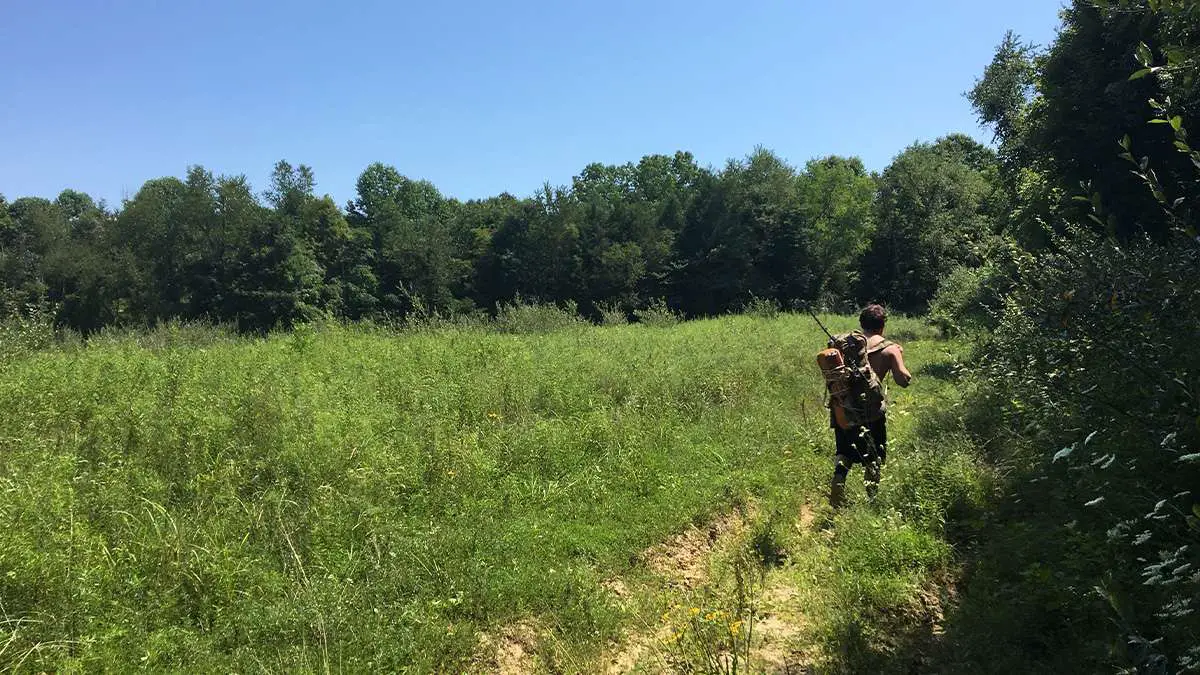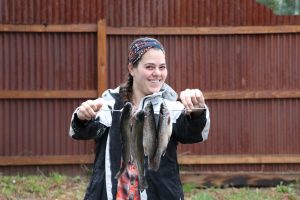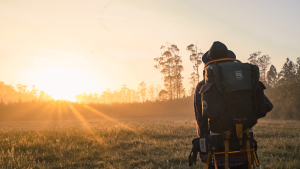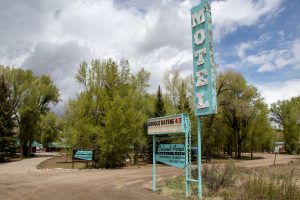Our story in the Charles C. Deam Wilderness Area of Hoosier National Forest begins on a Saturday morning in late July.
We had spent the previous night in Hardin Ridge recreation area in Hoosier National Forest, but our plan for the rest of the weekend was to back-pack into the woods of Charles C. Deam Wilderness Area near Bloomington, Indiana. Despite its proximity to Lafayette, IN, we had not spent much time in Hoosier National Forest and decided to take this long summer weekend to explore and spend some time in our most local wilderness.
Hickory Ridge Lookout Tower in Hoosier National Forest
As we drove into the wilderness area we stopped at the trailheads and viewpoints, assessing the area to determine how we would like to spend the next couple of days. One stop worth making is the Hickory Ridge Lookout Tower. The tower stands 110 feet tall and consists of 133 steps to the top, but the views are worth the trek as you can see from photograph at the top of the page.
Once we saw the view from Hickory Ridge Lookout Tower we knew we needed to begin hiking into the woods so we could set up camp. I recently purchased a fishing pole for the first time in a number of years and wanted a spot where I could fish in the morning. We also knew from experience that some of the best camping spots in National Forests are those that are pre-established yet off the beaten path.
Making the Decision of where to Camp near Lake Monroe
We looked at the trail map and found a spot on Lake Monroe that seemed far enough from the trails and far enough toward the channel that the spot would be available and generally quiet. You can see our intended camping spot marked with an arrow in the trail map below. The plan was to drive as far as we could, pack some gear, and continue our journey on foot. We knew we could find the opening to the lake if we followed one of the channels.
Hoosier National Forest Hiking
From Tower Road we followed marked and unmarked roads including N County Road 1190 W. Motor vehicles are not permitted inside the wilderness area. As you can see in the map above, it appears we parked our car within the park’s boundaries, but we actually parked just outside a sign indicating that vehicles can no longer be used. Some maps may not be precise, but the fact remains if you continue on the roads in the direction of lake, at some point you will no longer be able to drive a vehicle. Even if you miss the small signs, the roads quickly become too rough for any common vehicle.
Hiking into Indiana’s Wilderness
According to online research, we thought we would be able to get within a mile and a half of the camp spot. It turned out that we were able to get about three miles from the site. The plan was simple, we continue along the road for about a mile and half, then follow one of the channels of Middle Fork Salt Creek about another mile and a half to the mouth of the lake where the camp site was positioned.
The walk along the road consisted of heavy woods sprinkled with occasional meadows, but eventually the road began to get wet. At first, there were a few marshy puddles, then came a flooded area. We did not suspect that we were quite to the creek so we tested the waters. At first it was about 50 feet or so of walking through just a few inches of water but the depth quickly grew, suggesting we had found the creek.
We waded back out, but had to make a decision. The flooded creek had moved the water line to a point where navigating the terrain along the waterway would be treacherous, but we were not familiar with these woods so there was risk in blindly taking on the forest. After some contemplation, we decided to stick to the flooded channel.
It quickly became clear that the flooded creek had forced us to maneuver the terrain of Indiana’s rolling hills. The hills are steep and at times dense with wooded trees and shrubs. Hundreds of spiders cling to webs that we constantly wiped from our faces and hair. All said and done there was three of these hills between our car and the camp spot. Where each of these hills met the creek created 10-15 foot rocky ravines where we would have to either hike a ways up the hill to get around or crawl down into and wade through knee level mud to cross. We ended up in both situations along the way.
Camping in Hoosier National Forest next to Lake Monroe
Once we arrived at our campsite we were exhausted. The flooding had made the area wet but we were able to find a dry spot for the tent and collect enough wood to cook dinner over a fire. At the end of the day our intended mile and half hike ended up being a 5-mile adventure.
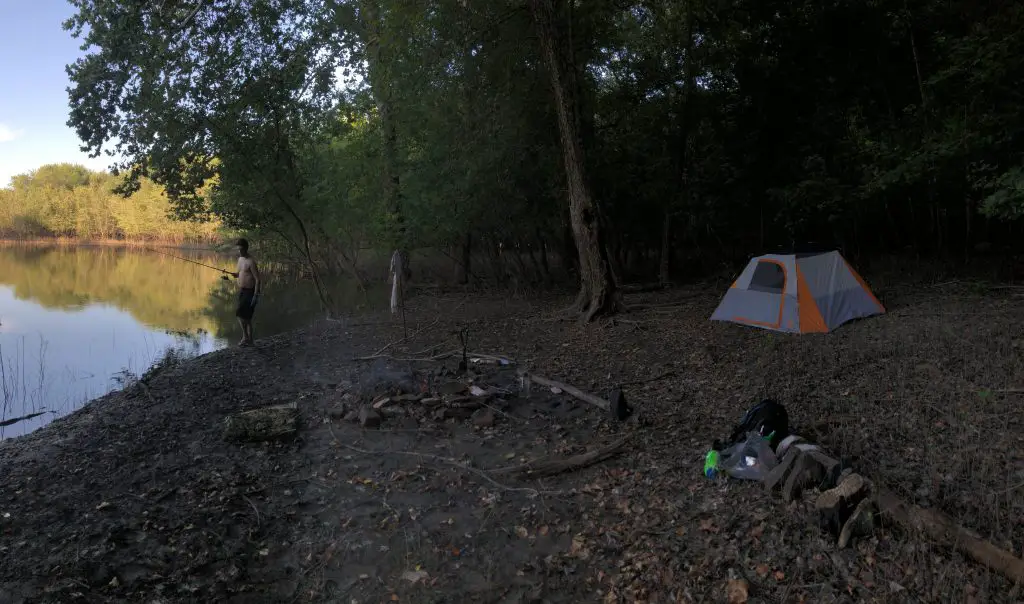
Hiking out of Charles C. Deam Wilderness Area
Our hike out the next morning was treacherous in a different way. We were making it out of the woods in the heat of the day and were running low on water. We decided to take the straight path to the car through the woods, which meant we would essentially be hiking over the three hills that we had maneuvered around the previous day. It was a fun hike. We were absolutely exhausted, but we love being in nature and were in the heart of the woods.
We did not see much wildlife on this hike, though a bald Eagle made a visit to our camp site and we saw a small snake on our hike out. By the time we reached our car the hike back was only about 3.5 miles rather than 5 miles as it was the previous day.
Final Reflections on Hoosier National Forest’s Wilderness Area
The most disappointing element of this experience was definitely the trash. Lake Monroe is only about half an hour drive from Bloomington and parts of the lake were quite busy. While I am pleased to see people utilizing nature, we really should be conscious of our waste because that stuff ends up in the backwoods where it will stay indefinitely. There were piles of boating waste, picnic gear, even a full size refrigerator. Despite the rampant litter, we enjoyed our time exploring the largest wilderness area in the state of Indiana and would 100% make the trek again.

